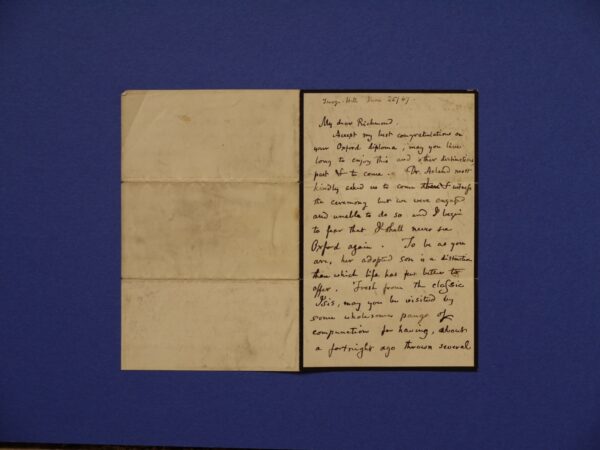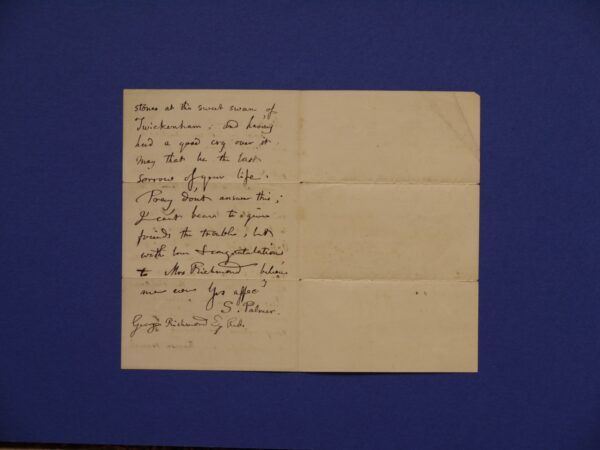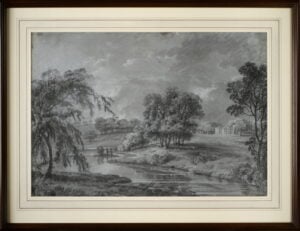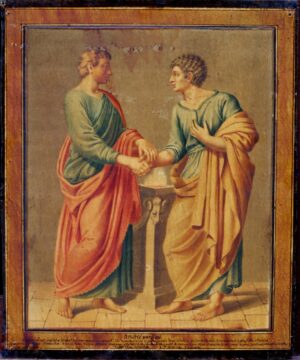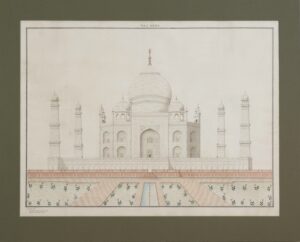Description
Content:
Furze Hill June 25/1867
My dear Richmond,
Accept my best congratulations on your Oxford diploma, may you live long to enjoy this and other distinctions, past and to come. Dr. Acland most kindly asked me to come there and witness the ceremony but we were engaged and unable to do so and I begin to fear that I shall never see Oxford again. To be as you are, her adopted son is a distinction than which life has few better to offer. Fresh from the classic Isis, may you be visited by some wholesome pange of compunction for having, about a forthight ago thrown several stones at the swat swan of Twickenham, and having had a good cry over it, may that be the last sorrow of your life, Pray don’t answer this; I can’t bear to give friends the trouble, but with love & congratulations to Mrs Richmond.
Believe me ever yours affectionately,
S.Palmer.
George Richmond Esq R.A.
